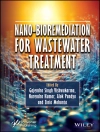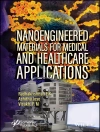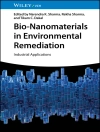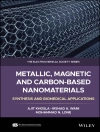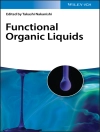Pollution has no borders. This popular 70’s saying from early ecologists is surprisingly still true nowadays despite overwhelming scientific evidence and public awareness of the occurrence of artificial toxic substances in water, food, air, living organisms and the environment. This book presents advanced reviews on pollutant occurrence, transfer, toxicity and remediation. The chapter on school air quality by Dambruoso et al. highlights the overlooked health issue of airborne pollutants in buildings. Children are particularly threatened because they spend 90% of their time indoors, even in summer. The chapter on industrial wastewater pollutants by Dsikowitzky and Schwarzbauer reviews pollutants from textile, petrochemical, paper, tire, chemical and pharmaceutical plants. The authors describe advanced analytical methods and ecotoxicity tests. Industrial pollutants include dioxins and furans that are also reviewed in the chapter by Mudhoo et al. The chapter on fly ash by Gianoncelli et al. presents many techniques to treat fly ash and, in turn, decrease pollutant concentrations. The authors also explain that fly ash can be recycled in agriculture, buildings and geopolymers. The chapter on antifouling paints used for ship protection, by Sousa et al., highlights the occurrence of toxic organotins in human organs such as heart, liver and breast milk. The chapter on surfactants by Rebello et al. focuses on safety concerns for humans and the ecosystems. Remediation techniques and green surfactants are presented. The chapters on toxic metals by Nava-Ruíz and Méndez-Armenta, Abarikwu and Ristić et al. describe sources, monitoring and diseases induced by lead, mercury, cadmium and thallium. The chapter on carcinogenic nitrosamines by Li et al. presents techniques and materials such as zeolites to remediate liquids and smoke containing nitrosamines.
Зміст
1. School air quality: pollutants, monitoring and toxicity.- 2. Organic contaminants from industrial wastewaters: identification, toxicity and fate in the environment.- 3. Fly ash pollutants, treatment and recycling.- 4. Organotin compounds from snails to humans.- 5. Surfactants: chemistry, toxicity and remediation.- 6. Cadmium, lead, thallium: occurrence, neurotoxicity and histopathological changes of the nervous system.- 7. Lead, arsenic, cadmium, mercury: occurrence, toxicity and diseases.- 8. Plants as monitors of lead air pollution.- 9. Carcinogenic nitrosamines: remediation by zeolites.- 10. Dioxins and furans: sources, impacts and remediation.
Про автора
Dr. Eric Lichtfouse is Editor of scholarly journals and series in environmental chemistry and agriculture. He is heading publication assistance services and teaching scientific writing in Europe and the USA. He has done research in organic geochemistry, soil carbon dynamics and phytoremediation. Dr. Jan Schwarzbauer is Editor of the journal ‘Environmental Earth Sciences’ and Subject Editor of ‘Journal of Soils and Sediments’. After studying chemistry at the University of Hamburg, he is working since 1998 at the RWTH Aachen University leading as full professor the group ‘Environmental Organic Geochemistry’. Dr. Didier Robert is professor in organic chemistry and green chemistry at the University Paul Verlaine-Metz (France). He is associate editor of the Journal of Photocatalysis Sciences and its research activities are devoted to the decontamination of air and water by photochemical processes, especially by photocatalysis. He is also editor of the biannual magazine ‘Univers City’ published by UPV-Metz, dedicated to Cultures and Sciences.


